Japan—where modern technology and centuries stand side by side—is a treasure trove of experiences for the traveler. Rich in heritage, vibrant cities, active volcanoes, mountain serenity, and unparalleled digital creations—all combine to make Japan a memorable vacation destination for any time of year.
Here are ten of the country’s notable destinations that are now the center of renewed discussion around the winter season; each place carries its own story, beauty, and cultural commentary.
Mount Fuji
For those visiting Japan for the first time or planning to visit again, Mount Fuji—Japan’s highest mountain—is at the top of the list. Rising proudly at 3,776 meters in the center of Honshu Island near the ocean. This peak is known as a source of inspiration for many artists and poets.
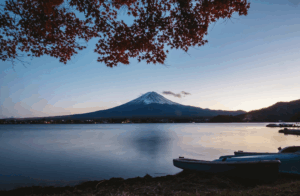
Located in the heart of the Fuji-Hakone-Izu National Park, this mountain was recognized as a UNESCO ‘Cultural Heritage’ in 2013—which has captured the attention of the world with its blend of natural beauty and religious significance. Fuji’s historical integrity and natural wonder have combined to make it a major tourist destination.
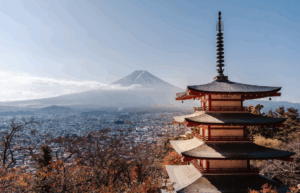
Interactive Museum Teamlab:
One of the hottest topics in Tokyo is teamLab Borderless—a mapless digital art museum where visitors become part of the artwork rather than just observers. The museum has reopened at a new location, Azabudai Hills, and offers visitors a “get in and get lost” experience.
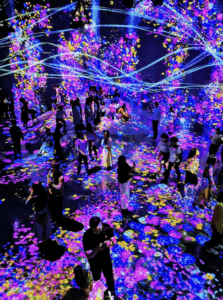
The vast maze of photographs, animated objects, and interactive exhibits keeps visitors enthralled for more than three hours—sometimes making it difficult to get in without advance tickets. As a fusion of technology and art, the museum attracts both domestic and international tourists.
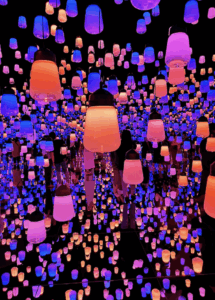
Fushimi Inari
Fushimi Ianri-Taisha Shrine in Kyoto is world-famous for its thousands of reddish torii gates. Each gate is like a small flag, guiding visitors up the unique path of Mount Inari. The temple’s Roman gate is believed to have been donated by Toyotomi Hideyoshi in 1589.
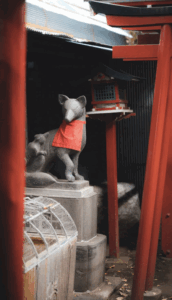
And the ancient religious practices and public life here still resonate today. People come to walk the path in the morning or evening, and the peaceful essence of Kyoto gives off a different spiritual vibe.

All the different arcades
Arcade culture is a popular pastime in a city the size of Tokyo, with night-time lights and arcades. Akihabara, Ikebukuro, Shinjuku and Shibuya are all packed with game centers like GiGO, Taito and Game Panic.
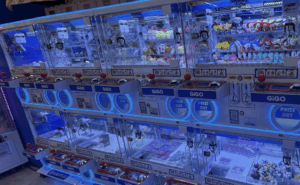
Japanese arcades are different from what Western visitors experience; they still use 100 yen coins and the prizes range from anime figures and key chains to unexpected items. They are entertainment centers not just for children, but for teenagers and adults alike.

Authentic Kyoto
For a more authentic look at Kyoto, step into the city’s small, rambling shotengai (local shopping arcades) and izakaya—where the beauty and spiritual recipes of everyday life are hidden. People sit along the banks of the Kamogawa River, picnicking, enjoying music, and embracing the riverside scenery in autumn or spring.

Especially in the Kamogawa Delta near Demachiyanagi, tourists cross the river on foot—where the simple meals of traditional konbini are combined with the color of the sky and the silence of the mountains, Kyoto’s “survival” culture is evident.
Shibuya Sky
Shibuya Sky is a vivid symbol of Tokyo’s modern side. Shibuya Sky, located on the observation deck at the top of the Shibuya Scramble Square Tower, offers a 360-degree panoramic view of the entire city; on clear days, you can even catch a glimpse of Mount Fuji in the distance. It is popular for photographing the city lights and the crossing at night.
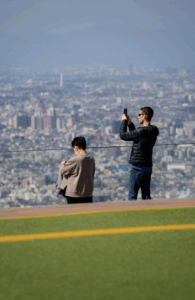
The Active Volcano
Owakudani—an active volcanic crater area in Hakone—offers a different kind of experience for tourists. Along with hot springs, sulfurous smoke, and stunning scenery, the black eggs here pique the curiosity of tourists; eating them is said to increase longevity. Some parts of the popular itinerary may require entry or advance reservations, and walking along the route should be done with caution and caution.
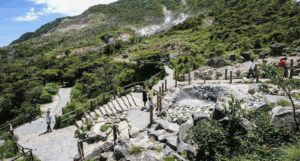
Nara Park
Nara Park is a combination of free-roaming animals and ancient Buddhist temples. Deer roaming freely in this park come close to visitors and are fed with special deer crackers sold here. In addition, the park is culturally enriched by the Kohfukuji national park and the works of art at the Nara National Museum.
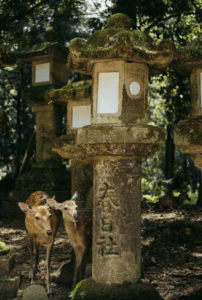
The Island Miyojima
Off Hiroshima, Miyajima Island—also known as Itsukushima—is famous for its floating torii gate. At high tide, the gate appears to float on the water; stay in a ryokan, or traditional inn, on the island and spend the night surrounded by the silence of the evening and the peaceful gaze of the deer.
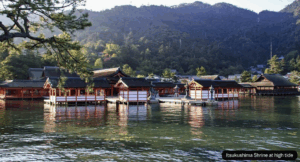
Otagi Nenbutsuji in Arshiyama
Finally, let’s come to a wonderful place hidden in the mountains on the western edge of Kyoto—Otagi Nenbutsuji Temple. This is an ancient Buddhist temple located in the secluded Arashiyama area, which is famous for its 1,200 Rakan statues. Each sculpture carries a different expression and emotion—some smiling, some meditating, and some standing in strange and playful poses.

These sculptures reflect the laughter and tears, joy and sorrow of ordinary Japanese people. Historically, the ancient temple was destroyed by floods several times, then rebuilt, and today it stands as a symbol of local art and spirituality. For those who travel to Kyoto, this temple is like a secluded sanctuary—far from the hustle and bustle of the city, but close to the heart.
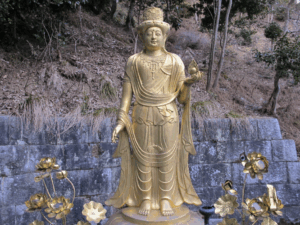
These ten places highlight the multifaceted nature of Japan—a unique combination of nature, spirituality, technology, history, and culture. From the serene peaks of Mount Fuji to the dazzling lights of Shibuya Sky, or from the free deer of Nara Park to the magical world of light at TeamLab—everything is etched in the traveler’s mind.
Watch the post here.
https://www.tiktok.com/@reismetjabo/photo/7556635512048569633
More from Wake Up Singapore:
Six Hidden Gems to Experience South Korea’s Autumn Colors—Your Next Perfect Vacation
These Six Destinations Will Change Your Next Trip To Thailand
What Tourists Need to Know About Thailand’s National Mourning Period
If you have a story or a tip-off, email admin@wakeup.sg or get in touch via Whatsapp at 8882 5913.
Interested in advertising on our media channels? Reach out to us at admin@wakeup.sg!
Since you have made it to the end of the article, follow Wake Up Singapore on Telegram and X!
Wake Up Singapore is a volunteer-run site that covers alternative views in Singapore. If you want to volunteer with us, sign up here!
If you can, please do consider buying a mug or two to support Wake Up Singapore’s work!







